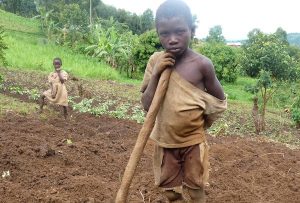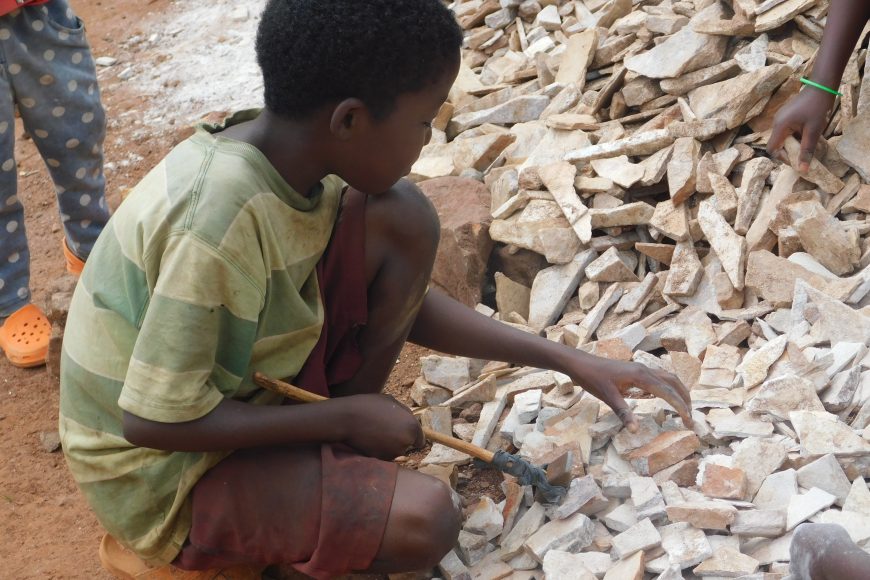Child labour refers to the exploitation of children through any form of work that deprives children of their childhood, interferes with their ability to attend regular school, and is mentally, physically, socially and morally harmful. Such exploitation is prohibited by legislation worldwide, although these laws do not consider all work by children as child labour; exceptions include work by child artists, family duties, supervised training, and some forms of child work practiced by Amish children, as well as by indigenous children in the Americas.

Child labour has existed to varying extents throughout history. During the 19th and early 20th centuries, many children aged 5–14 from poorer families worked in Western nations and their colonies alike. These children mainly worked in agriculture, home-based assembly operations, factories, mining, and services such as news boys some worked night shifts lasting 12 hours. With the rise of household income, availability of schools and passage of child labour laws, the incidence rates of child labour fell.
Poverty and its related problems are some of the main causes of child labour in Africa. The 2001 survey reported that about 90 per cent of the children working in productive activities replied that they were working to either supplement family income (23.8 per cent) or to improve it (66.0 per cent). Poverty in Africa is chronic due to, among others, population pressure, land degradation, unemployment and under-employment among adults and school leavers (youth). Children are paid lower wages than adults, not unionized, and do not demand workers’ rights. They are also thought by some to be more efficient in certain types of work, though this has not been demonstrated. Thus, these people tend to prefer child workers to adults.
The other main cause of child labour is cultural values. The Ethiopian culture encourages children to work to develop skills. Children are considered as assets to generate income in time of poverty. Children should, therefore, be given work at home early in life and be obliged to assist parents.
Other reasons include educational problems, like distance from school, poor quality of education, over-crowding, inability to support schooling (food, uniforms, exercise books, school fees, etc.); family disintegration due to divorce; various conflicts, war and civil strife; drought and resettlement; orphan hood due to AIDS; and rapid urbanization.
CONSEQUENCES
Children are exposed to accidental and other injuries at work. They should thus be protected to prevent social, economic and physical harm, which persist to affect them during their lifetime. Such injuries include,
- General Child injuries and abuses like cuts, burns and lacerations, fractures, tiredness and dizziness, excessive fears and nightmares.
- Sexual abuse, particularly sexual exploitation of girls by adults, rape, prostitution, early and unwanted pregnancy, abortion, Sexually Transmitted Diseases (STDs) and HIV/AIDS, drugs and alcoholism.
- Physical abuse that involve corporal punishment, emotional maltreatment such as blaming, belittling, verbal attacks, rejection, humiliation and bad remarks.
- Emotional neglect such as deprivation of family love and affection, resulting in loneliness, and hopelessness.
- Physical neglect like lack of adequate provision of food, clothing, shelter and medical treatment.
- Lack of schooling results in missing educational qualifications and higher skills thus perpetuating their life in poverty.
- Competition of children with adult workers leads to depressing wages and salaries.
Apart from the above, lack of opportunity for higher education for older children deprives the nation of developing higher skills and technological capabilities that are required for economic development/transformation to attain higher income and better standards of living.

